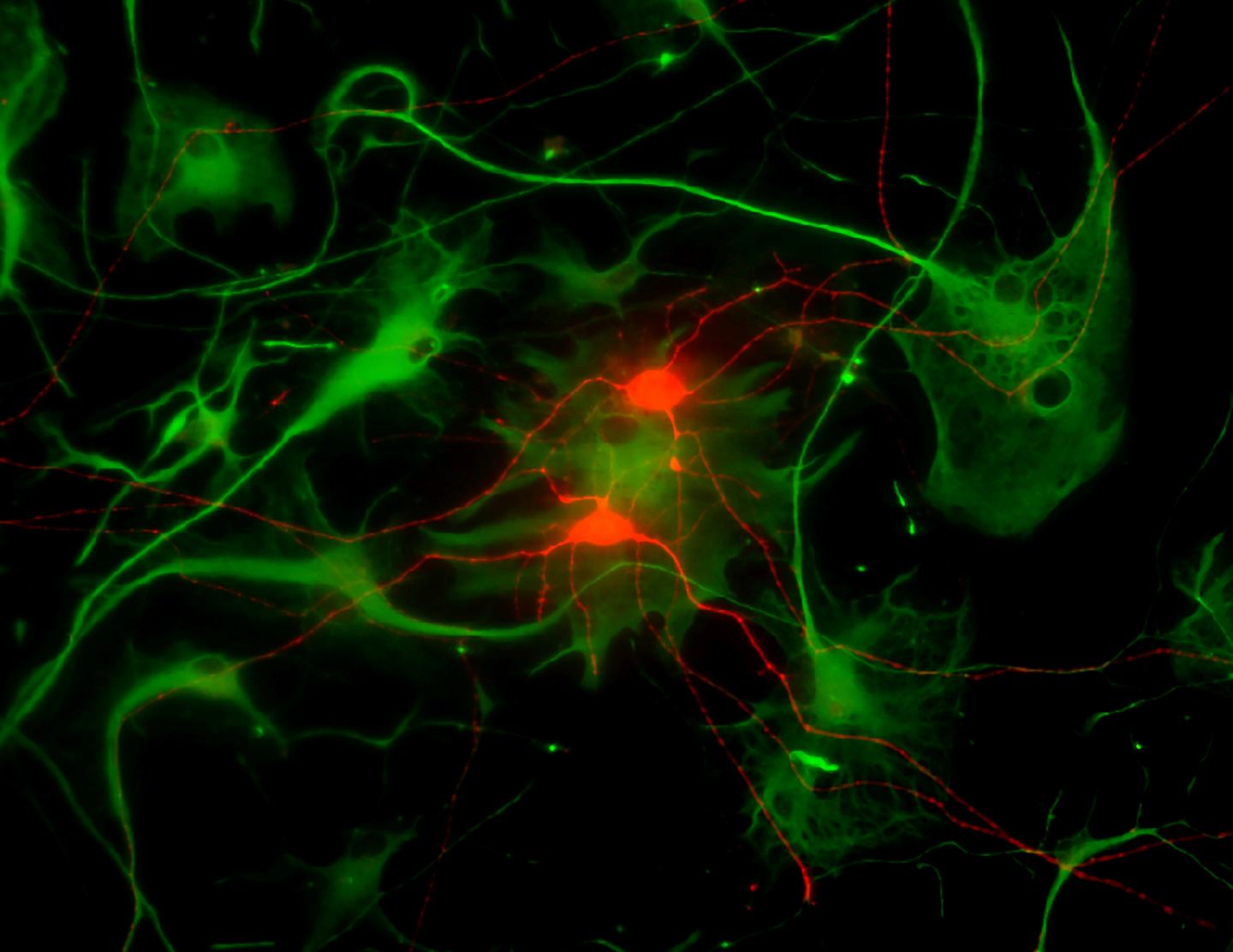
Credit: Photo courtesy of the School of Science
INDIANAPOLIS — IUPUI biologists, growing human pluripotent stem cell-derived retinal ganglion cells in the lab, have developed a way to create more-mature models that better mimic the environment in the human retina. By introducing hPSC-RGCs to astrocytes, researchers can create cells that are more analogous to human RGCs and can be further used to study diseases such as glaucoma. These results are published online in Stem Cell Reports.
Jason Meyer, an associate professor of biology in the School of Science at IUPUI, is using the hPSC-derived retinal organoids to better understand the development and maturation of retinal ganglion cells. These cells transmit visual information to the brain, and when that connection is disturbed, a person loses sight. But RGCs do not exist and function in the retina alone; the astrocyte cells are vital in providing support and instruction to the retinal ganglion cells.
“The astrocyte is found in the retina, but very specifically in association with the retinal ganglion cells,” Meyer said. “They are found all around the retinal ganglion cells and throughout the optic nerve connecting to the brain, so we found they have an important role in how these RGCs are developing and functioning.”
Biology graduate researcher and first author on the paper Kirstin B. VanderWall set up a system to grow RGCs alone or with the astrocytes to see how the astrocytes affect the growth and maturation of these cells.
“What we found is that the astrocytes speed up the differentiation and provide a retinal ganglion cell that functions more appropriately and acts more like how we would expect these cells to function in the human retina,” Meyer said.
RGCs are the cells primarily damaged by glaucoma, a disease that is the second leading cause of blindness. These findings will guide development of a more appropriate model to study how the cells are affected in diseases like glaucoma and could lead to a lab-grown model of the disease.
“Glaucoma doesn’t develop in immature cells that are still growing; we want to get the cells we study as close as possible to the stage when they start to develop problems,” Meyer said. “Ultimately, what we found is that these retinal ganglion cells do acquire some features of maturation on their own, but we are able to enhance that with the astrocytes.”
###
“Astrocytes Regulate the Development and Maturation of Retinal Ganglion Cells Derived from Human Pluripotent Stem Cells” is published online in Stem Cell Reports.
In addition to VanderWall and Meyer, IUPUI and Indiana University authors on the study are Ridhima Vij, Sarah K Ohlemacher, Akshayalakshmi Sridhar, Clarisse M. Fligor, Elyse M. Feder, Michael C. Edler, Anthony J. “A.J.” Baucum II and Theodore R. Cummins.
The study was supported in part by the National Eye Institute, BrightFocus Foundation, Indiana State Department of Health Spinal Cord and Brain Injury Fund, IU Office of the Vice President for Research, IUPUI Signature Center for Brain and Spinal Cord Injury, IUPUI University Fellowship, the Purdue Research Foundation Fellowship, and the Stark Neuroscience Research Institute/Eli Lilly and Company predoctoral fellowship.
Media Contact
Candace Gwaltney
[email protected]
317-274-0685
Original Source
https:/
Related Journal Article
http://dx.




